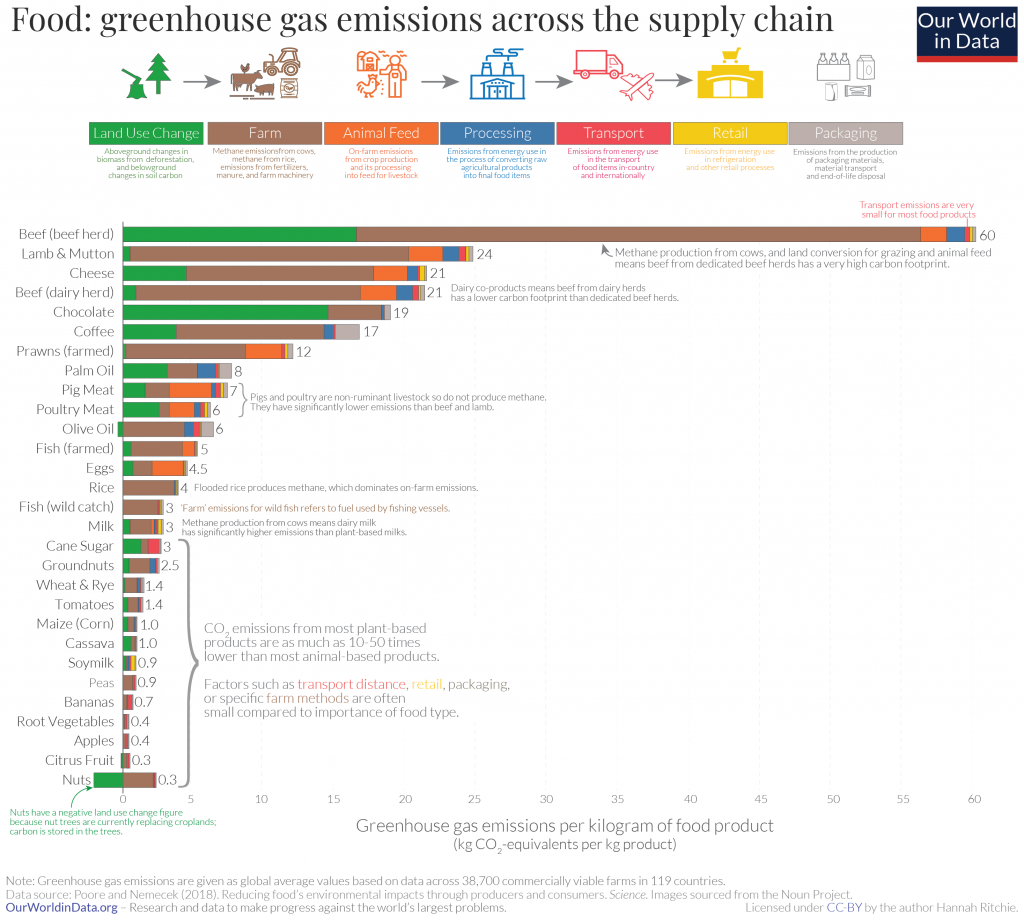Eating local is a piece of common advice to consumers in order for them to help in the reduction of carbon emissions. This is something that even the United Nations (UN) recommends. However, it turns out that doing so does not really create a significant dent in reducing our emissions.
According to the data collected by J.Poore and T. Nemecek in their article, Reducing food’s environmental impacts through producers and consumers, the impact of transportation of food products is minimal when it comes to reducing carbon emissions.
In the visualisation above by Our World In Data, it is clear that transportation has a minimal share in carbon footprint across the food items considered.
From our partners:
The major contributors
If we examine the graph above, we can see that the largest contributors to emissions are land use change and farm process including:
- application of fertilizers – both organic and synthetic;
- and enteric fermentation, which is the methane production from the stomachs of the cattle
Together, these two factors account for 80% of the carbon footprint of the majority of the food items included in the study.
It should also be noticed that when comparing animal and plant food products, animal products contribute magnitudes more of carbon emissions.
Transformative potential
Knowing this, what can the consumers do to make their consumption sustainable? Poore and Nemecek said that it will be a matter of radically changing their diet.
If consumers were to move to a diet that excludes animal products:
- land use will be reduced by around 3.1 billion hectares
- food’s GHG emissions will go down by 6.6 billion metric tons of CO2
- Acidification will decline by 50%
- Eutrophication will drop by 49%
The land no longer required for food production will also yield long-term benefits. According to Poore and Nemecek, around 8.1 billion metric tons of C02 will be removed from the atmosphere over 100 years. This is because soil carbon will reaccumulate and natural vegetation will begin to reestablish.
Apart from veering away from animal-based products, they also recommended lowering the consumption of more discretionary products like:
- Oils
- Sugar
- Alcohol
- Stimulants
Since they are also among the greatest contributors of carbon emissions.
Top-down
Poore and Nemecek highlighted the importance of communicating the impact of the produced food products to consumers. While dietary changes are relatively easier in the individual, an overall behavioural change is harder to attain especially with a lack of awareness.
Meanwhile, in the end of the producers, especially those who have high impact, they recommend digital monitoring of their impact and responding by shifting to lower impact practices. Such digital monitoring will also make it easier to relay the impact of food products to consumers.
On the whole, we can see that the burden of reducing the global carbon footprint cannot be shouldered by just the producers or just the consumers. There is a need for a concerted effort coming from the entirety of the supply chain.














